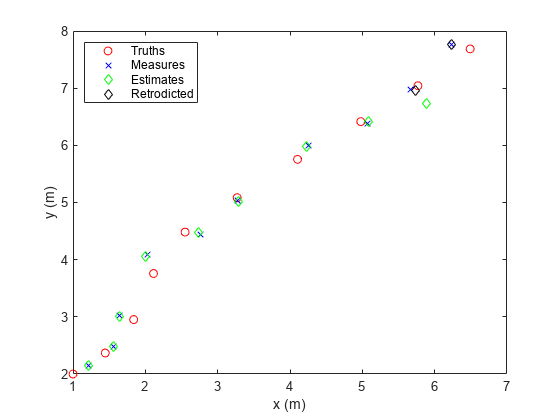retroCorrect
Description
The retroCorrect function corrects the state estimate and
covariance using an out-of-sequence measurement (OOSM). To use this function, specify the
MaxNumOOSMSteps property of the filter as a positive integer. Before
using this function, you must use the retrodict
function to successfully retrodict the current state to the time at which the OOSM was
taken.
[
corrects the filter with the OOSM measurement retroCorrState,retroCorrCov] = retroCorrect(filter,z)z and returns the
corrected state and state covariance. The function changes the values of
State and StateCovariance properties of the
filter object to retroCorrState and retroCorrCov,
respectively. If the filter is a trackingIMM
object, the function also changes the ModelProbabilities property of
the filter.
___ = retroCorrect(___,
specifies the measurement parameters for the measurement measparams)z.
Caution
You can use this syntax only when the specified filter is a
trackingEKF or trackingIMM
object.
Examples
Input Arguments
Output Arguments
More About
References
[1] Bar-Shalom, Y., Huimin Chen, and M. Mallick. “One-Step Solution for the Multistep out-of-Sequence-Measurement Problem in Tracking.” IEEE Transactions on Aerospace and Electronic Systems 40, no. 1 (January 2004): 27–37.
[2] Bar-shalom, Y. and Huimin Chen. “IMM Estimator with Out-of-Sequence Measurements.” IEEE Transactions on Aerospace and Electronic Systems, vol. 41, no. 1, Jan. 2005, pp. 90–98.
Extended Capabilities
Version History
Introduced in R2021b
